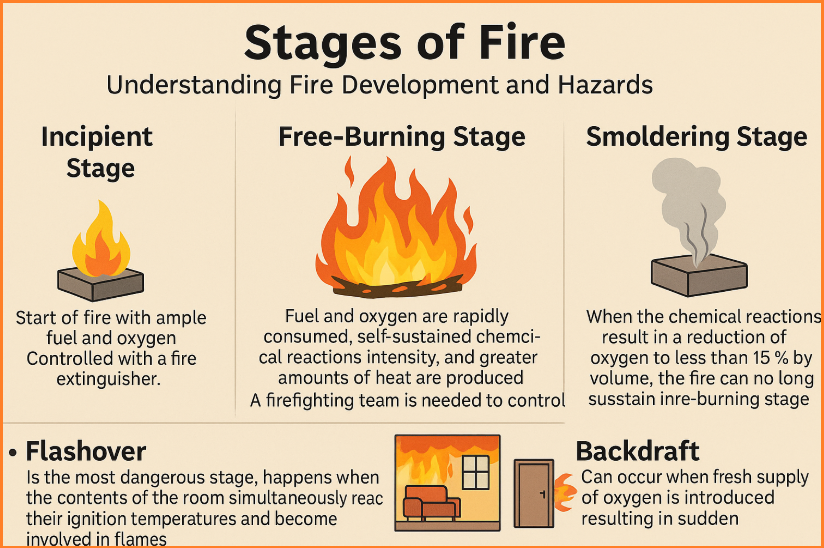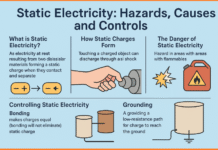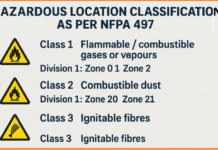Fires are complex chemical reactions that evolve through distinct stages, each presenting unique hazards and requiring specific responses. Understanding these stages is essential for effective firefighting, fire prevention, and safety planning. There are three primary stages of fire, with two additional critical phenomena—flashover and backdraft—that can occur under specific conditions. Below is a breakdown of each stage and its significance.
Contents
1. Incipient Stage
The incipient stage is the beginning of a fire. At this point, there is ample fuel and oxygen, allowing the fire to ignite and sustain combustion. The flame is typically small and localized, and smoke production is minimal. This stage often involves low heat and minimal spread, making it the most manageable point to extinguish a fire.
- Response: A portable fire extinguisher is usually sufficient to control and extinguish the fire at this early phase.
- Risk: If not quickly addressed, the fire can escalate into the next stage.
2. Free-Burning Stage (Growth Stage)
Also known as the growth or free-burning stage, this is where the fire intensifies rapidly. Fuel and oxygen are consumed at an accelerated rate, and self-sustaining chemical reactions generate high temperatures and expanding flames. Smoke, heat, and toxic gases increase significantly.
- Response: This stage requires intervention by a professional firefighting team using hoses, ventilation equipment, and protective gear.
- Risk: Extreme heat and potential for rapid spread pose serious danger to occupants and responders.
Flashover (Critical Event)
Flashover is a transition that can occur during the free-burning stage. It happens when the temperature in a room becomes so high that all combustible materials simultaneously reach their ignition point and erupt into flames.
- Characteristics: Rapid increase in fire intensity; flames engulf the entire room almost instantly.
- Risk: Most dangerous moment for firefighters; survival is unlikely without immediate evacuation or protection.
3. Smoldering Stage (Decay Stage)
In the smoldering or decay stage, the fire begins to die down due to a lack of oxygen (typically below 15% by volume). Combustion slows, but chemical reactions may continue within the remaining fuel. Smoke and heat persist, and hot gases accumulate.
- Risk: Though the fire appears to be dying, hidden flames and heat may still reignite the fire or lead to a hazardous event like backdraft.
Backdraft (Critical Event)
A backdraft occurs when fresh oxygen is suddenly introduced into a smoldering, oxygen-depleted fire environment, such as when a door or window is opened.
- Reaction: The built-up gases rapidly ignite, causing an explosive combustion.
- Risk: Backdrafts are unpredictable and extremely dangerous, capable of causing significant damage and injury.
Understanding the stages of fire—from incipient, to free-burning, through potential flashover, to smoldering, and the risk of backdraft—is essential for both fire safety professionals and the public. Each stage presents different threats, and timely, informed action can mean the difference between containment and catastrophe. Recognizing these phases helps in improving emergency response and ultimately saves lives and property.





